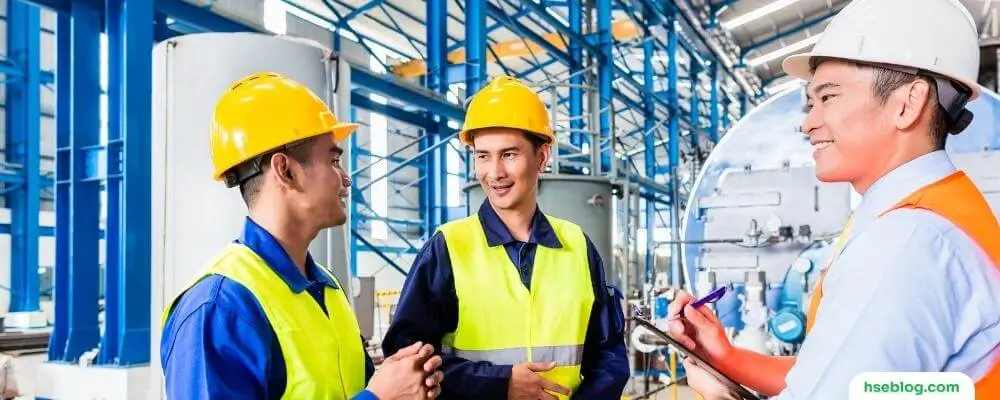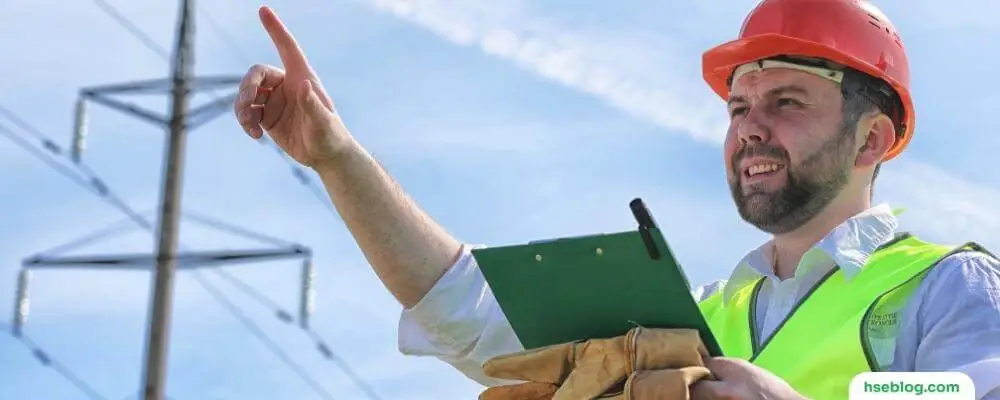The emphasis on safety and well-being has never been more significant in the modern workplace. Across industries and occupations, prioritizing health, safety, and welfare is paramount, and the key to this is the role of the safety supervisor. But what exactly does safety supervision entail, and why are safety supervisors crucial in a work environment? In this blog post, we will explore the concept of safety supervision, delve into the multifaceted role of a safety supervisor, and highlight why these professionals play a vital role in safeguarding businesses and their employees.
Safety supervisors’ importance extends beyond ticking compliance boxes; they foster a culture of safety that protects and enhances every staff member’s productivity, minimizing the risk of accidents and contributing to overall business success. Let’s uncover the fascinating world of safety supervision and learn how these experts create safer, healthier, and more productive workplaces for all.
What Is Safety Supervision?
Safety supervision refers to overseeing, monitoring, and managing the safety procedures and protocols within a workplace environment. The role is usually filled by a safety supervisor, whose primary responsibility is to ensure the safety and well-being of all personnel in the workplace, including employees, contractors, and visitors.
The safety supervisor is responsible for the following:
- Ensuring compliance with health, safety, and welfare regulations.
- Monitoring and protecting the health, safety, and welfare of all personnel.
- Maintaining and updating safety standards in line with legal or industry-specific requirements.
- Providing training and advice to staff about safety measures, laws, and regulations.
- Investigating and reporting on accidents and incidents that occur in the workplace.
- Monitoring and reporting on the performance of health, safety, and welfare measures in the workplace.
- Acting as a point of contact for all safety-related issues, offering advice, and facilitating communication.
- Consulting with stakeholders about health, safety, and welfare responsibilities and any regulation changes.
- Maintaining relevant safety documentation such as risk assessments, safety plans, and accident reports.
- Monitoring working conditions and ensuring hazardous materials are correctly stored and labeled.
Safety supervisors play a vital role in fostering a safe and secure work environment, reducing accidents, and ensuring legal compliance by performing these duties. Their role is crucial in minimizing workplace hazards, ensuring employee well-being, and reducing potential legal liabilities for the company.

Why Are Safety Supervisors So Important?
So, why are supervisors so important? They can take immediate, direct action to ensure employees’ work areas are safe and healthy. In his text, Occupational Safety and Health Management, Thomas Anton relate that the supervisor bears the most significant responsibility and accountability for implementing the safety and health program because he or she works directly with the employee.
There are a lot of good reasons why safety supervisors are essential for employers. For example, they:
1. Monitor And Protect The Health, Safety, And Welfare
Safety supervisors have a proactive role in preserving the health, safety, and welfare of all individuals associated with the business. This entails vigilantly observing the workplace to identify potential hazards, conducting comprehensive risk assessments, and implementing preventative measures to mitigate these risks. This responsibility extends to employees, contractors, visitors, and even the general public, ensuring the environment is safe and secure for all interacting.
2. Maintain And Update Safety Standards
With an up-to-date knowledge of current safety regulations and guidelines, safety supervisors are instrumental in maintaining and improving workplace safety standards. This means regularly reviewing and amending safety protocols and policies in line with legislation or industry best practices changes. Safety supervisors ensure the business remains compliant and its staff is protected by quickly adopting and communicating new safety standards throughout the organization.
3. Provide Training And Advice To Staff
Safety supervisors act as a resource for staff, providing valuable training and advice on various health and safety issues. From fire safety training and first aid courses to education on specific regulations relevant to their work, the supervisor ensures every team member is equipped with the knowledge they need to work safely. This ensures that all staff members know and can follow the correct safety procedures, creating a safer working environment for everyone.
4. Investigate And Report On Incidents
When accidents or incidents occur, safety supervisors take on an investigative role. They thoroughly examine the circumstances leading to the incident, identify its cause, and determine if there were any breaches in safety protocols. Following the investigation, they report their findings to relevant authorities and oversee the implementation of corrective actions to prevent similar incidents from reoccurring.
5. Ensure Compliance With Regulations
Ensuring regulatory compliance is a key role of a safety supervisor. To adhere to health and safety standards, they must inspect machinery, equipment, and working practices. If legislation changes, the safety supervisor is responsible for understanding its impact on operations and implementing necessary changes, protecting the business from potential legal consequences of non-compliance.

6. Monitor And Report On Performance
Safety supervisors continuously monitor the implementation and effectiveness of safety measures. They check whether safety regulations are being followed and whether the existing measures are sufficient. By systematically reporting their findings and suggesting improvements, they maintain a dynamic and responsive approach to safety, promoting continuous organizational improvement.
7. Act As A Point Of Contact
Serving as the central point of contact for all health, safety, and welfare matters, safety supervisors facilitate communication between different stakeholders. They advise staff, interpret and communicate regulation changes, and liaise with external organizations such as safety consultants or regulatory bodies.
8. Consult With Stakeholders
Safety supervisors work closely with various stakeholders, including management, employees, and contractors, to foster a shared understanding of health, safety, and welfare responsibilities. Regular communication and consultation ensure everyone is aware of and aligned with any new regulations or changes that may affect how they operate within the business.
9. Maintain Documentation
A meticulous approach to documentation is crucial for safety supervisors. They maintain and regularly review important documents, including risk assessments, safety plans, and accident reports, ensuring they reflect current operations and standards. This serves as a record of safety performance but also aids in identifying trends and areas for improvement.
10. Monitor Working Conditions
Safety supervisors directly monitor working conditions such as temperature, lighting, ventilation, and noise levels to ensure they meet health and safety standards. They also ensure hazardous materials are properly labeled, stored, and handled, carrying out regular inspections and tests to verify compliance.
Conclusion
Safety supervisors are the backbone of workplace safety, bridging the gap between regulations and real-world applications. Their roles extend beyond simple compliance, fostering a culture of safety and well-being that directly contributes to productivity, efficiency, and business success. By vigilantly monitoring working conditions, maintaining safety standards, providing training, and acting as an essential point of contact for safety issues, they create an environment where employees can focus on their roles with the assurance of their safety. Understanding and appreciating the role of safety supervision is a critical step for any business aiming to succeed in today’s health-conscious and safety-driven professional landscape.

